Late December Plant & Garden FAQ
Late December Plant & Garden FAQ
Even as we’re in the thick of the holiday season, our customers have questions about their plants and gardens. They are asking us about how to treat their holiday plants into the future, what the best variety of houseplant is for their situation, and whether the plants in their gardens are likely to be okay just as they are. Here are a few questions that people have sent by email or asked when they visited our store on West Main Street in Hyannis.
Q. A friend gave me a little lemon cedar…can I plant it outside after Christmas?
These bright, soft-looking trees we call lemon cypress, lemon cedar or Goldcrest cypress (Cupressus macrocarpa) are a favorite for winter decorating because of their cheerful lime color. They look great on a table or mantle, and are especially lovely with red poinsettias. Unfortunately, they are not hardy when grown in the ground on Cape Cod. Plan on moving your little tree to a larger clay pot after Christmas, and grow it in a bright window for the rest of the winter. In May you can move it outside to a part-sun location on your deck or patio, and enjoy it as a container plant, before bringing it back indoors next fall.
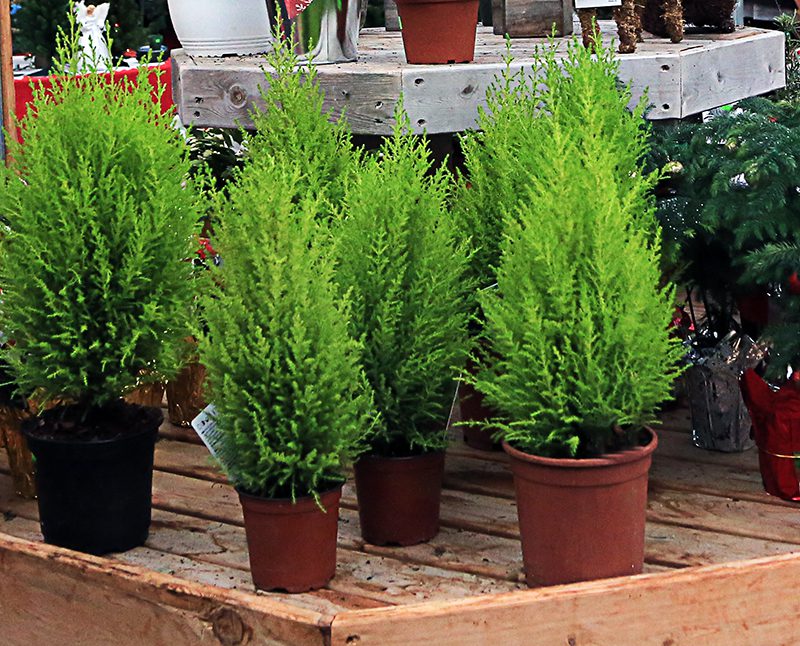
Q. Why do I always see Amaryllis bulbs sticking up above the soil?
This is a great question from an observant customer, and there is are two practical reasons that Amaryllis bulbs are planted this way. First of all, these bulbs are very large. If they needed to be covered by soil they would have to be placed in taller, deeper pots, which would make them more difficult to ship and fit into the average household. But more importantly, planting them so that only the base is covered protects the bulbs from rotting. If they were covered with soil and kept constantly moist indoors, the bulbs would rot and die. When only the bottom portion of the bulb is covered that’s enough to stabilize the plant in the pot and keep the roots moist, but allow the bulb to be dry.
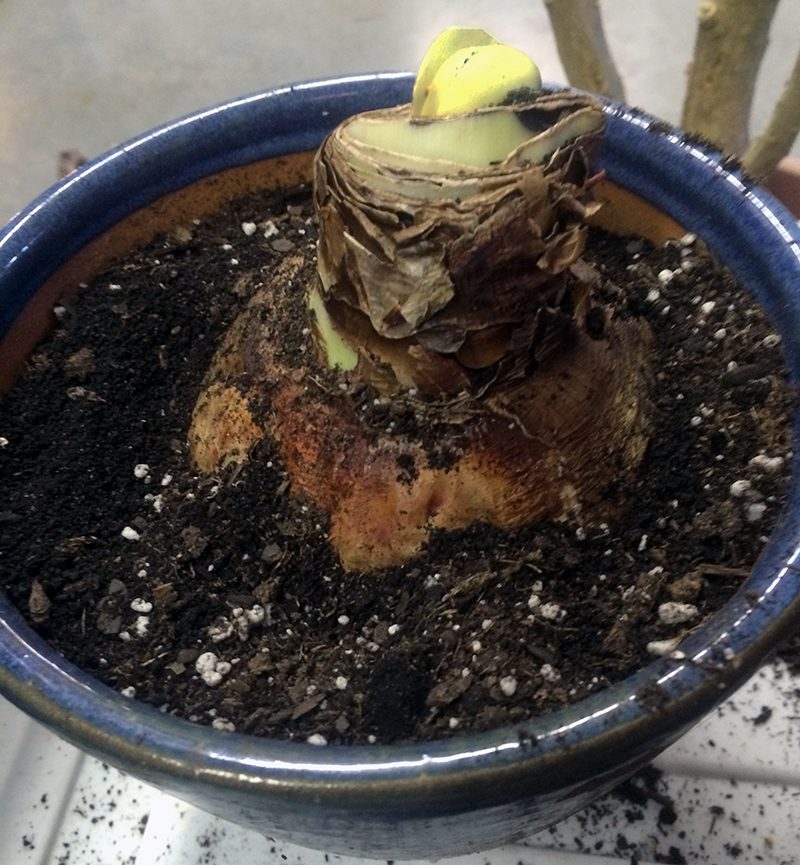
Q. The bulbs in my garden are coming up! Do I need to cover them?
This is a frequent question at this time of year as people worry that their “plants are confused and think it’s spring.” Your plants are fine, and as the temperatures continue to fall they will pause in their growth. You do not need to cover bulb foliage or perennials that are poking up now. In fact, those green tips are photosynthesizing and making energy for the plant.
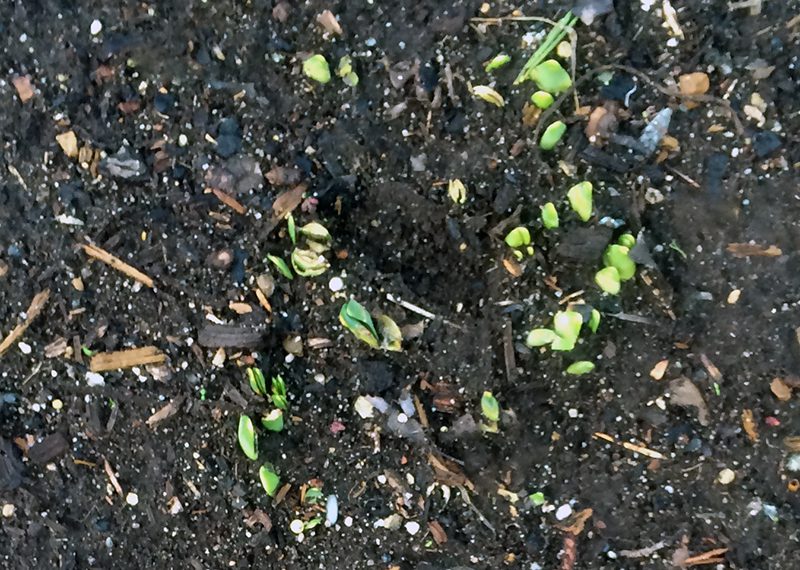
Q. I bought a Christmas rose hellebore at Country Garden recently…can I plant it outside now?
Yes, but if you’ve had it indoors in the warm temperatures for awhile, get it used to the cold over three or four days by first putting it outside during the day but bringing it into the garage or other cool interior place overnight. Then plant it in the ground where it will be in shade or part-shade next summer.
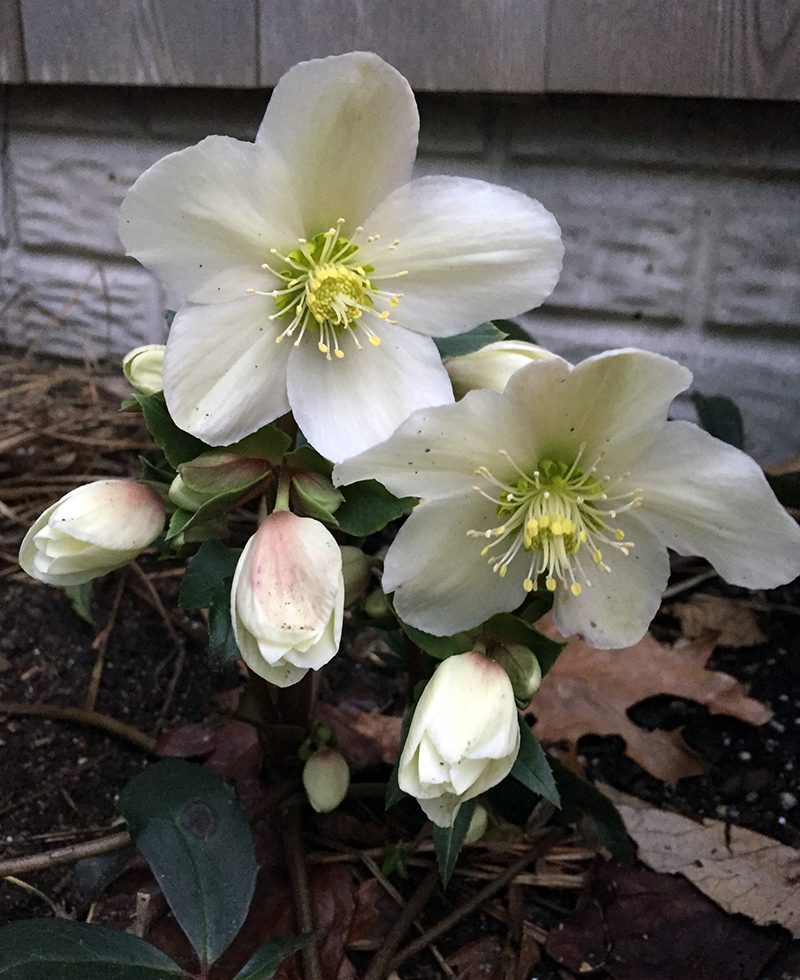
Q. Do you have any houseplants that flower all year without stopping?
As a matter of fact, the Anthuriums that are in our greenhouse right now bloom continuously when they are happy. How do you keep them flowering? Place them in a place that’s very bright but not in much direct sun. Directly in an eastern-facing window or near but not directly in front of a southern or western exposure is perfect. Water this plant well once a week, making sure that it doesn’t stand in water for any length of time. (Place the pot on a large saucer and empty the dish a couple of hours after watering.) This plant does not have to go outside in the summer. Fertilize in February and July. If you need or want to repot it, mix 1/2 potting soil with 1/2 orchid bark and use that around the roots.
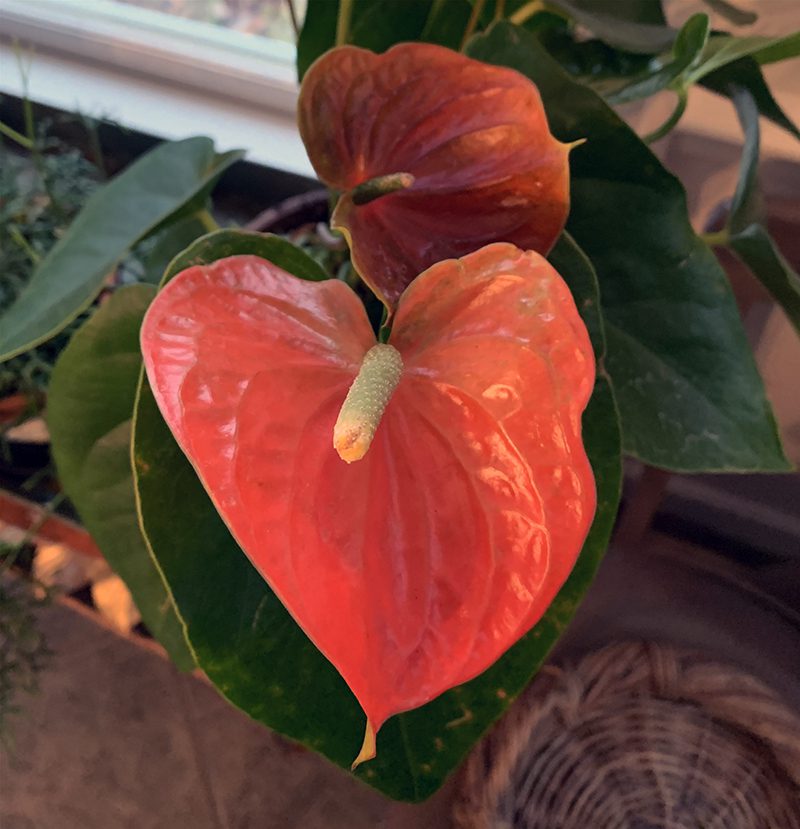
Q. What houseplants do well in north-facing windows?
Ferns and begonias will thrive in windows that never get any direct sun, and they come in such a wide variety of foliage colors and textures that you’ll have a lovely display even if these plants aren’t flowering. You can either leave begonias and ferns in the same window all summer, or put them outside in a shady spot for the growing season.
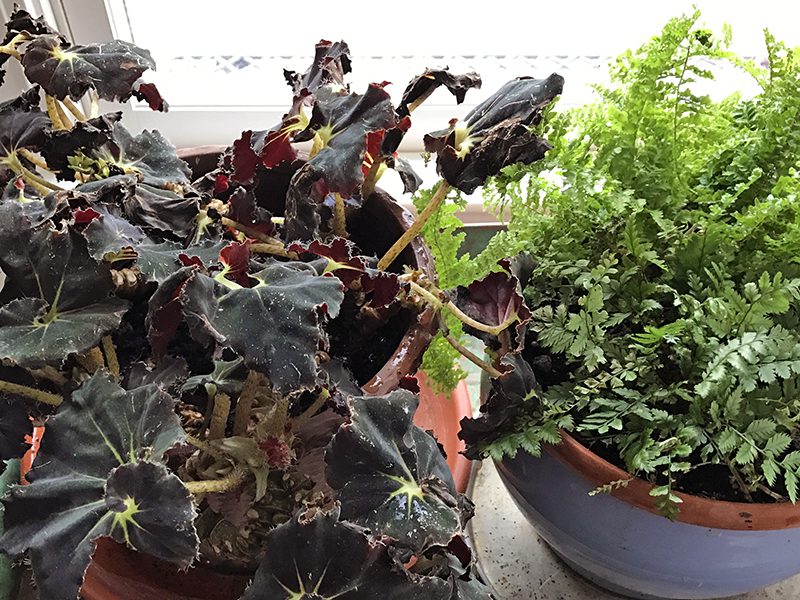
Q. I’m growing paperwhite narcissus. After they finish flowering, can I save the bulbs for next year, or plant them in the garden?
Unfortunately, no. These bulbs are not hardy here, and after growing them in water the energy of the bulb is depleted so it’s seldom successful to keep them. And besides, most people find that they can’t remember that they’ve tucked their recently-purchased hardy bulbs in the garage and forgotten about them. Every week at this time of year we hear from someone who has purchased daffodils or tulips in the fall and forgot that they were in a bag on the shelf. (Yes, if that’s your question, you can plant those daffodils or tulips in the ground now! Do it soon, before the ground freezes.) So enjoy the paperwhites as if they were a long-lasting cut flower bouquet…then put the bulbs and foliage in your compost pile or bin once they’ve finished.
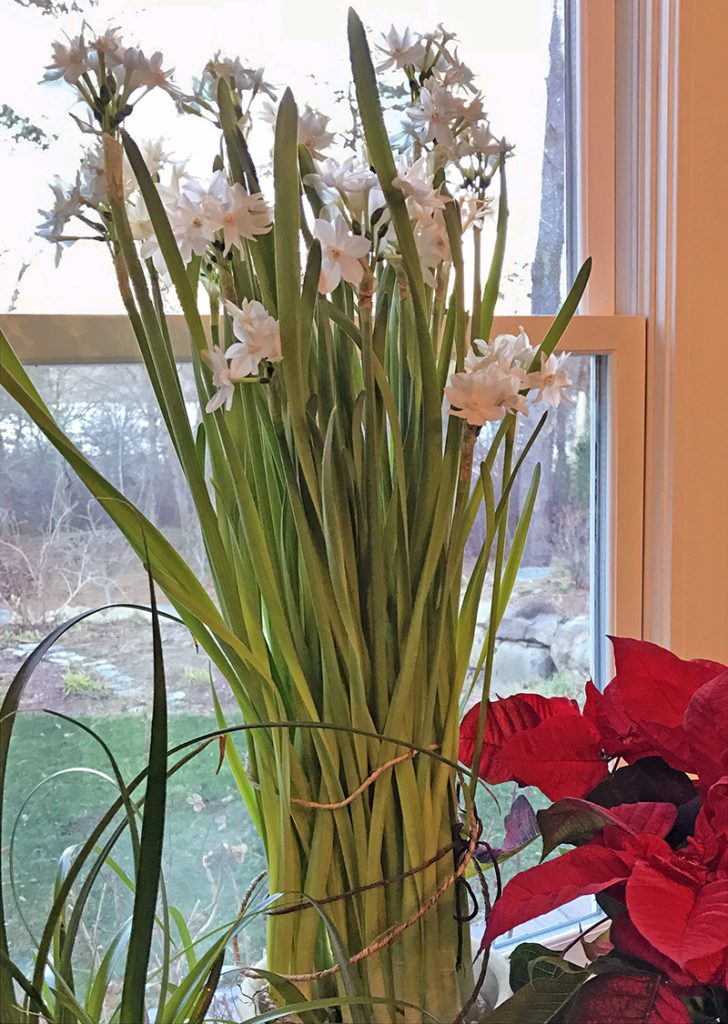
Q. I grew blue hydrangeas in pots on my deck this past summer…can they stay outside all winter?
You’ll want to move those pots into an unheated garage or cold basement now. They over-winter in such cool but not below 32°F. locations very well. They are more apt to either die or not flower if you leave the pots outside. If you don’t have a place to bring them in, pull the pots into the most sheltered location near the house and hope for the best. What’s the worst that will happen? If those plants do die, you can come into the store and get some new ones next May, and you, your former plants, and your deck will all be in Hydrangea Heaven.
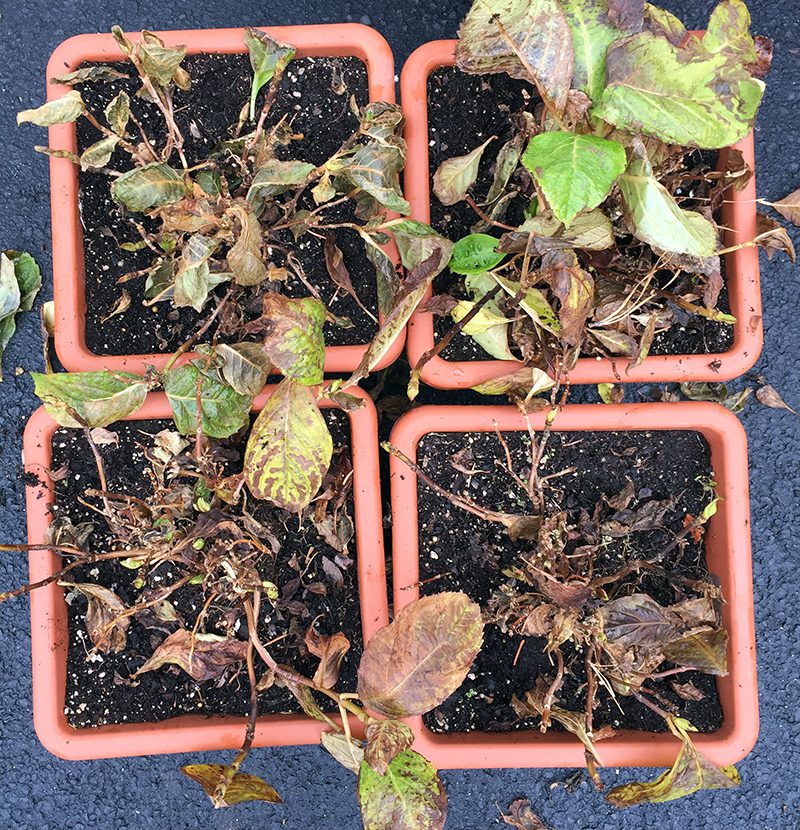
Subscribe To Our Newsletter
Sign up for our weekly email about sales and events.
